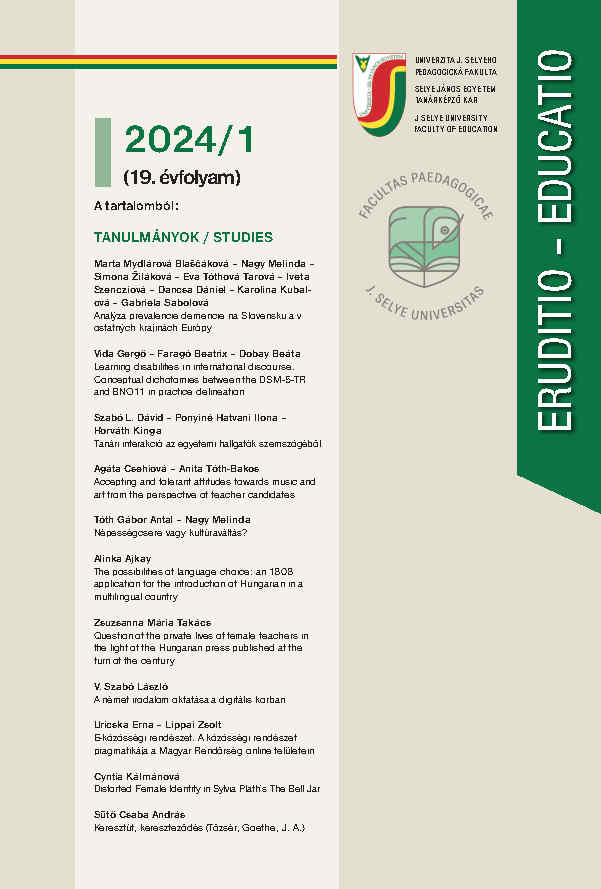The possibilities of language choice:
The possibilities of language choice:
an 1808 application for the introduction of Hungarian in a multilingual country
Author(s): Alinka AjkaySubject(s): Language and Literature Studies, Studies of Literature, Hungarian Literature
Published by: Pedagogická fakulta Univerzity J. Selyeho
Keywords: 18th-19th century literature; language; multilingualism; Upper-Hungarian literature; scientific society; Joseph II’s language decree
Summary/Abstract: At the turn of the 18th and 19th centuries, Hungary was characterised by ethnic diversity. Nevertheless, for a long time there was no sign of this causing any particular tension. The language of everyday life was characterised by pragmatism, and the language of public life, education and science was uniformly Latin. Joseph II’s language decree of 1784 (which made German the official language instead of Latin) started the process that would culminate in the language decree of 1844, which made Hungarian the official language. In the first decade of the 19th century, there was a revival of the language issue, with the publication of a series of documents on the language. At the Diet of 1807, there were such heated debates about the language that the Viennese court and the secret police thought it would be a good idea to hold a competition to see whether Hungarian was suitable for official use in Hungary. 21 contributions were received for this competition. Almost half of the applicants were from Upper Hungary, all of them Protestants, most of them pastors. They were the founders of one of the earliest scientific-literary societies, Solennia, in 1808. The works of the society’s members were published every year in the journal Solennia, which was published in four languages (Latin, Hungarian, German, Slovak).
Journal: Eruditio - Educatio
- Issue Year: 19/2024
- Issue No: 1
- Page Range: 071-083
- Page Count: 13
- Language: English

